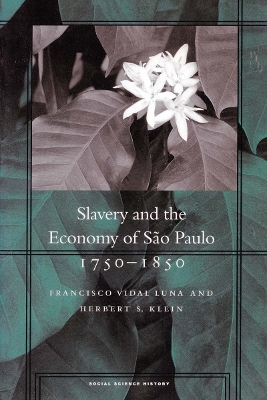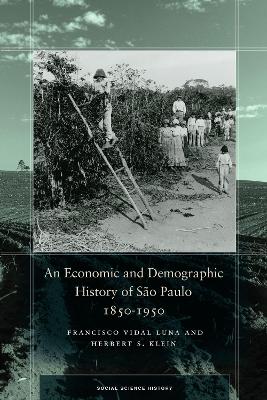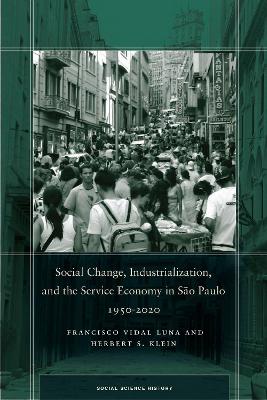Social Science History
3 total works
Slavery and the Economy of Sao Paulo, 1750-1850
by Francisco Vidal Luna and Herbert S. Klein
Today the Brazilian state of Sao Paulo is one of the world's most advanced agricultural, industrial, and urbanized regions. Its historical evolution, however, is poorly understood. Most scholarly attention has been paid to the period after 1850, when coffee rose to economic dominance, or to the period since 1880, when large-scale European immigration turned the city of Sao Paulo into one of the largest metropolises in the world.
This book thus provides the first comprehensive portrait of the economy and people of Sao Paulo during the critical transition from the traditional eighteenth-century colonial world to the modernizing world of the nineteenth century.
The result is a major rethinking of the history of early slavery in Brazil-it shows that, contrary to previous beliefs, slavery was as deeply entrenched and exploited in Sao Paulo as elsewhere in Brazil, and that the state's early economic growth (as the world's leading coffee-producing region after 1850) was made possible by an expanding African slave labor force. This raises many questions about Sao Paulo's supposed "exceptionalism" and challenges the standard account of the state's economic history, which has been strongly shaped by ideas of path dependence.
In addition to studying the slave-owning class, the authors investigate the economic role of free whites and colored who did not own slaves, and compare Sao Paulo's slave society and economy with other such regions in the Americas.
An Economic and Demographic History of Sao Paulo, 1850-1950
by Francisco Vidal Luna and Herbert S. Klein
Sao Paulo, by far the most populated state in Brazil, has an economy to rival that of Colombia or Venezuela. Its capital city is the fourth largest metropolitan area in the world. How did Sao Paulo, once a frontier province of little importance, become one of the most vital agricultural and industrial regions of the world?
This volume explores the transformation of Sao Paulo through an economic lens. Francisco Vidal Luna and Herbert S. Klein provide a synthetic overview of the growth of Sao Paulo from 1850 to 1950, analyzing statistical data on demographics, agriculture, finance, trade, and infrastructure. Quantitative analysis of primary sources, including almanacs, censuses, newspapers, state and ministerial-level government documents, and annual government reports offers granular insight into state building, federalism, the coffee economy, early industrialization, urbanization, and demographic shifts. Luna and Klein compare Sao Paulo's transformation to other regions from the same period, making this an essential reference for understanding the impact of early periods of economic growth.
Social Change, Industrialization, and the Service Economy in São Paulo, 1950-2020
by Francisco Vidal Luna and Herbert S. Klein
In the 1950s–80s, Brazil built one of the most advanced industrial networks among the "developing" countries, initially concentrated in the state of São Paulo. But from the 1980s, decentralization of industry spread to other states reducing São Paulo's relative importance in the country's industrial product. This volume draws on social, economic, and demographic data to document the accelerated industrialization of the state and its subsequent shift to a service economy amidst worsening social and economic inequality.
Through its cultural institutions, universities, banking, and corporate sectors, the municipality of São Paulo would become a world metropolis. At the same time, given its rapid growth from 2 million to 12 million residents in this period, São Paulo dealt with problems of distribution, housing, and governance. This significant volume elucidates these and other trends during the late twentieth and early twenty-first centuries, and will be an invaluable reference for scholars of history, policy, and the economy in Latin America.


